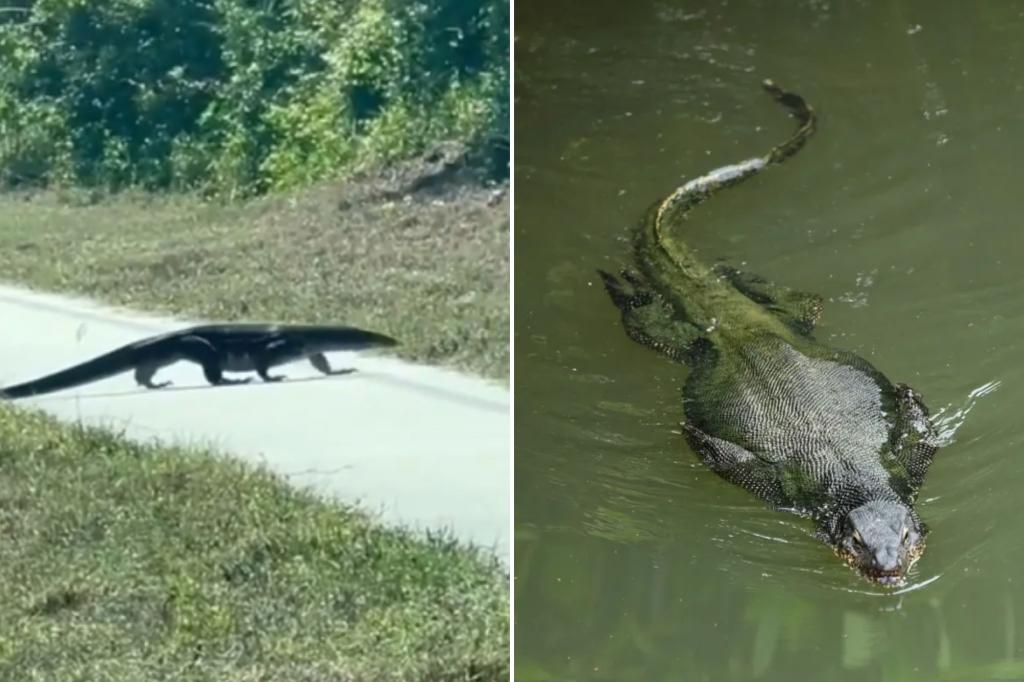A massive, 5-foot-long lizard, believed to be an Asian water monitor, was spotted on a busy road in western Florida. Renee Aland captured a video of the lizard and posted it on social media. She called the Florida Fish and Wildlife Conservation Commission after spotting the lizard because they required photographic proof to make a report. Aland initially thought the lizard was an alligator but quickly realized it was a large lizard when she saw its tongue. Her daughter, Zoey Marzonie, compared the lizard to Mrs. Kipling from the Disney Channel show “Jessie,” and described it as huge and reminiscent of the show’s character. Concerns were raised about the impact of these non-native lizards on the local ecosystem due to their voracious eating habits.
The Asian water monitor is primarily found in southern and Southeast Asia and is not native to the U.S. Although common as a pet and legal to own, these lizards can grow to four to six feet and have a diverse diet that includes snakes, insects, birds, frogs, rodents, and small birds. The U.S. Fish and Wildlife Service confirmed that the presence of these lizards in the wild could have a negative impact on native wildlife in Florida. This presents a concern for the ecosystem as these lizards are known to be voracious eaters and can potentially disrupt the balance of the local environment due to their diet and predatory habits. The Asian water monitor is considered one of the largest lizards in the world and is a popular pet due to its impressive size and appearance.
In addition to the Asian water monitor, another invasive species, the Peter’s rock agama, has been sighted moving up the coast of Florida. Residents of West Melbourne have reported seeing these red-headed reptiles, which are native to tropical, sub-Saharan Africa. Ken Gioeli, a natural resources extension agent at the University of Florida, refers to the lizards’ migration north as “the invasion front.” The Peter’s rock agama was first documented in Florida in 1976 and has since been found in 20 counties in the state. While the impact of the presence of these lizards on the local environment is not fully understood, concerns have been raised about the potential consequences of their introduction to the ecosystem.
Both the Asian water monitor and the Peter’s rock agama are examples of non-native species that have established populations in Florida, raising concerns about their impact on the local environment and wildlife. The presence of these lizards could lead to disruptions in the ecosystem, as they are known to be voracious eaters that prey on a variety of animals. The Florida Fish and Wildlife Conservation Commission is monitoring the situation, but further research is needed to fully understand the extent of the impact these invasive species may have on the state’s native wildlife. Residents are advised to report sightings of these lizards to help track their movements and assess the potential risks they pose to the local ecosystem. Efforts to control the spread of these invasive species may be necessary to protect Florida’s native wildlife from the negative consequences of these non-native predators.


